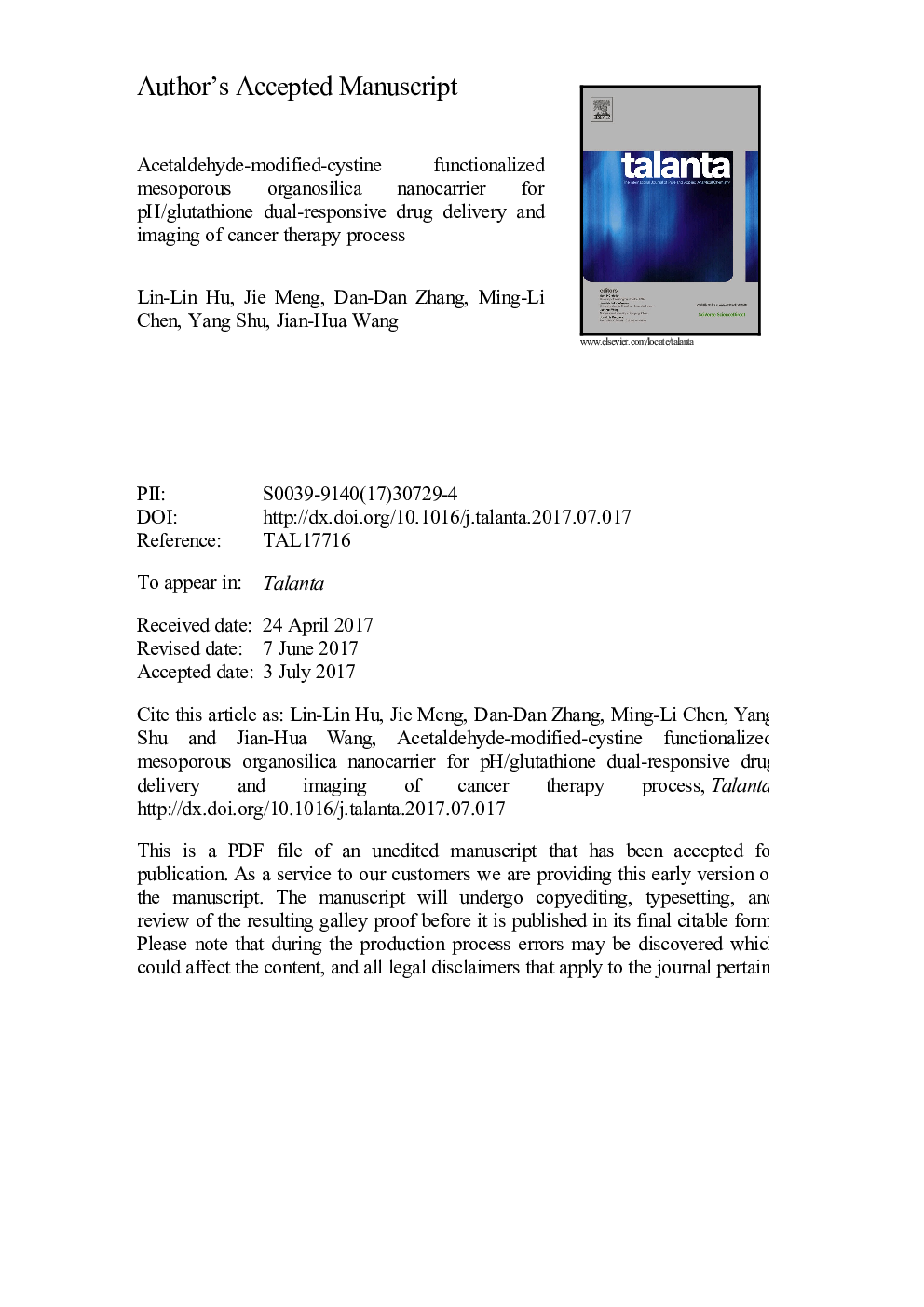| Article ID | Journal | Published Year | Pages | File Type |
|---|---|---|---|---|
| 7677343 | Talanta | 2018 | 33 Pages |
Abstract
A multifunctional drug nanocarrier is developed by incorporating acetaldehyde-modified-cystine (AMC) into mesoporous organosilica nanoparticles (MONs), shortly termed as MONs-AMC. The anticancer drug doxorubicin (DOX) links directly to MONs-AMC through electrostatic interaction between DOX and AMC to produce a conjugate, MONs-AMC-DOX, with a drug loading efficiency of 26.24 ± 1.35%, corresponding to a loading capacity of 0.26 ± 0.01 mg mgâ1 for DOX. Schiff base AMC contains a -S-S- bond and two -CËN- bonds which cleave in the presence of certain level of GSH and in an acidic medium, providing MONs-AMC-DOX the capability for triggering pH and glutathione (GSH) dual-responsive drug release. Further, the self-fluorescent nature of AMC offers the tracing capability without the need of fluorescent label, which facilitates real-time tracing of the drug delivery and cancer therapy process. With 10 mmol Lâ1 GSH and at pH 5.0, a drug release efficiency of 52.27 ± 2.84% is achieved. The intracellular drug release process is traced with confocal laser scanning microscope by monitoring the green fluorescence of MONs-AMC-DOX and red fluorescence of DOX with excitation at 408 nm and 488 nm, respectively. The drug loaded nanocarriers exhibit a time-dependent cellular uptake behavior, providing an enhanced therapeutic effect to A549 cancer cells.
Keywords
Related Topics
Physical Sciences and Engineering
Chemistry
Analytical Chemistry
Authors
Lin-Lin Hu, Jie Meng, Dan-Dan Zhang, Ming-Li Chen, Yang Shu, Jian-Hua Wang,
